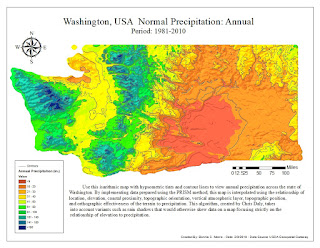Module 1 Lab: Map Critique
This week was the first lab assignment for cartography. We were instructed to find an example of a "well done" map and a "poorly done" map from a variety of sources and recognize elements that we want to include and exclude from our aesthetic throughout our GIS careers. I really enjoyed looking through all the maps and appreciated how a story can be told with very few words. There were several maps that appealed to me, but I felt a lot of them omitted information that was necessary. For example, a global map of racial tolerance did not include country names or the majority race in each area, which seems necessary to communicate a point in my opinion.
The map I ultimately chose as my "well done" map is a map of the world's population concentrated in the United States based in the population density of major cities. This is very interesting to me because it gives one an idea of how crowded or spread out different cities are over a very familiar landscape. The elements I liked most about this map were how simple yet descriptive it is, how clean it looks, the idea in general, and the fact that it would be very difficult to misinterpret the information. Although it lacks some essential map elements, the main takeaway is that its important not to overcrowd a map. The information is clear, concise, and effectively presented.
https://persquaremile.com/2011/01/18/if-the-worlds-population-lived-in-one-city/
Conversely, the "poorly done" map I chose is one that is extremely overcrowded. This map has information that is so close together with colors that are so similar that the information can't be read effectively. It's almost impossible to tell the location of oil on May 3rd and the other dates overlap so much that it is unclear where the oil is on those days as well. Although the map has essential elements, the data source is covered by the legend. For people concerned about how the oil might affect land, the map is so zoomed in it's difficult to tell where its located without referring to a different map. Finally, blue shouldn't be used to demonstrate anything but water in a map of this nature.
https://misguidedmaps.com
Overall, I learned a lot and enjoyed the lab assignment this week. It could be considered that combining elements of both maps would create a "perfect" map. I will keep the information in mind as I create my own maps going forward.





Comments
Post a Comment